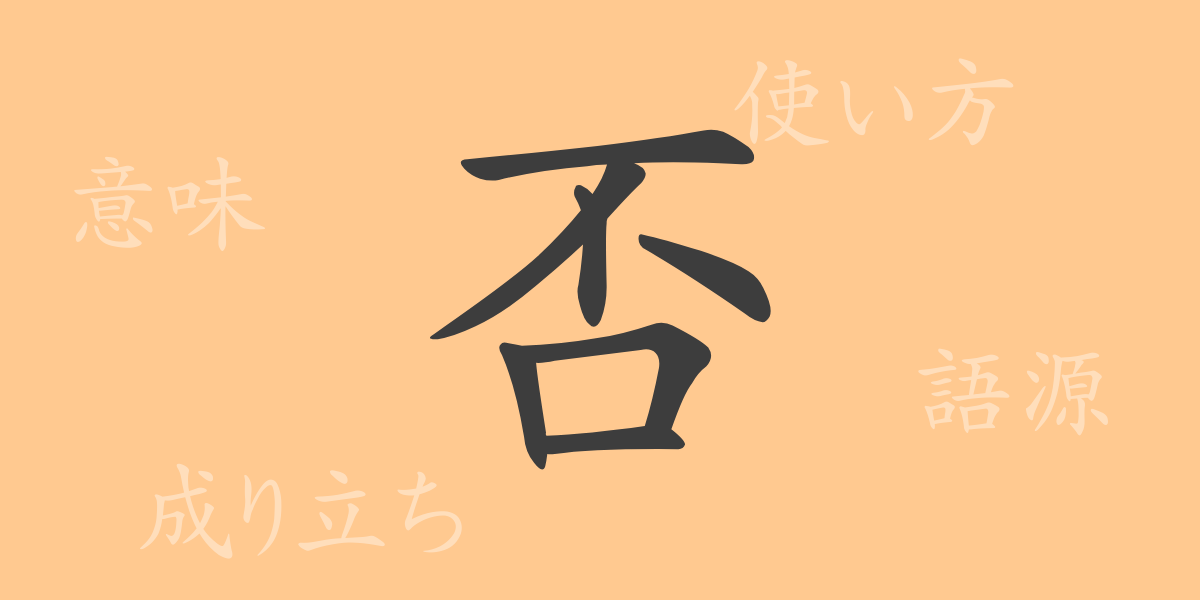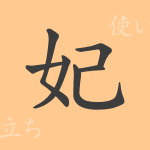The kanji (かんじ, kanji) characters in the Japanese language carry deep history and meaning in their shapes and sounds. The kanji “否” (ひ, hi) is frequently used in daily conversations and written language, yet its background and diverse usages are not widely known. In this article, we will delve into the origin, meaning, usage, and related idioms and expressions of “否” (ひ, hi), uncovering the rich world of expression this single character holds.
Origin of “否” (ひ, hi)
The kanji “否” (ひ, hi) traces its origins to ancient Chinese oracle bone script. Originally, it was a combination of “不” (ふ, fu) and “口” (こう, kou), symbolizing “closing the mouth to deny.” Over time, the character’s shape evolved, undergoing several transformations to become the current “否” (ひ, hi). This kanji not only represents negation but also encompasses nuances of change and transition, reflecting its complex history.
Meaning and Usage of “否” (ひ, hi)
The character “否” (ひ, hi) primarily signifies negation, but depending on the context, it can also refer to unavoidable facts, as in “否めない” (いなめない, inamenai). Additionally, it is used in expressions like “否応なく” (いやおうなく, iyaounaku), indicating situations with no choice. It functions as a prefix to form negative expressions, seen in words like “否定” (ひてい, hitei) and “否認” (ひにん, hinin), which mean rejection and denial, respectively.
Readings, Stroke Count, and Radical of “否” (ひ, hi)
The kanji “否” (ひ, hi) has multiple readings in Japanese.
- Readings: In on’yomi (音読み, on’yomi), it is read as “ヒ” (ひ, hi), and in kun’yomi (訓読み, kun’yomi), it is read as “いな” (いな, ina) or “いや” (いや, iya).
- Stroke count: “否” (ひ, hi) has 7 strokes.
- Radical: The radical is “不” (ふ, fu), and it is classified under kanji that include the “不” (ふ, fu) radical.
Idioms, Expressions, and Proverbs Using “否” (ひ, hi)
There are many idioms, expressions, and proverbs that include “否” (ひ, hi), each with its unique connotations. For example, “否応なしに” (いやおうなしに, iyaounashini) describes a situation progressing against one’s will, while “否応無しに” (いやおうなしに, iyaounashini) emphasizes the coercive nuance. “否決” (ひけつ, hiketsu) means the rejection of a proposal or opinion, and “否定形” (ひていけい, hiteikei) refers to the negative form in grammar, opposing the affirmative form. These expressions demonstrate the rich expressiveness of the Japanese language.
Conclusion on “否” (ひ, hi)
The kanji “否” (ひ, hi) possesses profound meaning and diverse usages that are not immediately apparent from its simple shape. From indicating negation to referring to unavoidable facts and situations with no choice, and playing significant roles in idioms and expressions, understanding the rich world of this single character can deepen one’s comprehension of the Japanese language.

























